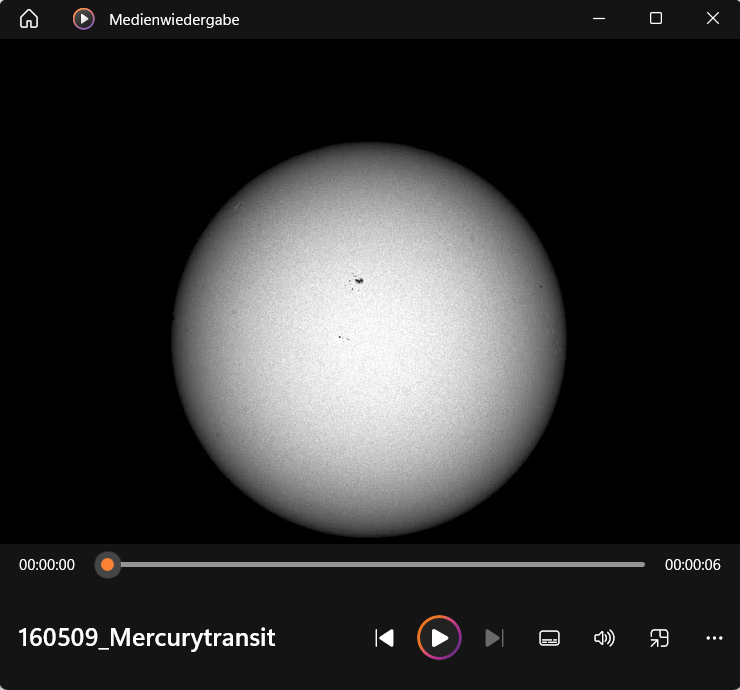(best resolution: 1024 x 768)
Those of you who closely follow the reports of rare astronomical events may remember the phenomenal Venus transits in front of the sun in 2004 and 2012. On May 9th, 2016 a similar transit ocurred, this time not by Venus, but by Mercury. The spot that Mercury left by passing between earth and sun was significantly different both in size and speed. The planet smaller than Venus and closer to sun and therefore further away from earth is imaged as a smaller spot moving more slowly in front of the solar disc compared to Venus. The entire event took even longer than the almost 8 hours that the sun was visible from Europe in this transit event. Even at sunset the spot had not left the solar image yet.
Technology considerably advanced since 2004 and 2012. Even though Mercury's shadow was much smaller than Venus', the 2nd contact at 12:15 CET, when the planet fully entered the solar picture, was captured in nice detail. Have a close look at the outer left edge of the sun and don't forget to click on the image for magnification!
The air was not overly stable and occasional clouds disturbed a continuous observation with uniform picture quality.
But a few pictures taken at the moments with the steadiest air are referenced in the table below.
The poor dust management, however, was my own mistake. Although I carefully checked the uniformity of my sensor a few days before the transit, I underestmated the effect of volatile fibers that the SLR mirror was accidetially waving around. That's why the video is - amongst a few disturbances by clouds - a little bit inhomogeneous.
But let's be honest: A series of seven hours of astronomical observations will never be perfect...
In the video made from 95 individual pictures you will see Mercury starting from the entry point at the left moving downward to the right until sun set:

Finally the sun spectacularly set behind the "Donauturm", a tower from which you have an impressive view at Vienna.
Sites related to the 2016 transit:
NASA 2016 Mercury transit page
NASA page: "Can You Spot Mercury?"
If you should have noticed that some of these links have changed or if you would like to have added recommendable sites to this non-representative list, please send me an e-mail message.
Please keep in mind that astrophotography is a hobby that demands a lot of money and even more time and effort. So I have to state that the copyrights for all of these pictures are reserved. In case you'd like to use our pictures for more that just watching them, please send me an e-mail-message and ask for permission.
Thank you.